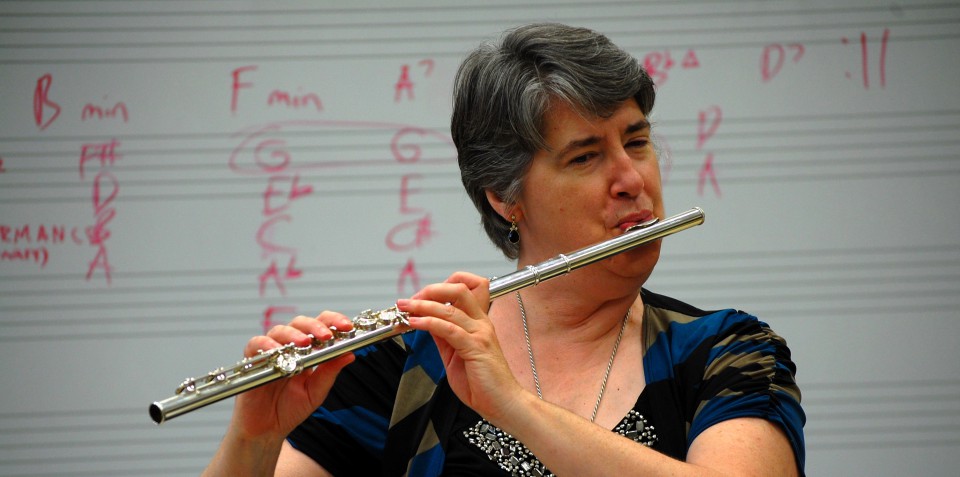It was brought home to me again this weekend how important it is to develop a seamless legato regardless of which wind instrument you play. At the University of Texas in Brownsville I had the pleasure of working with some very fine young flute and clarinet players at the South Texas Flute and Clarinet Festival. We were looking at a couple melodies from Marcel Moyse’s Tone Development Through Interpretation. Each student had to be encouraged to move faster air through the instrument to begin to be able to play longer lines and create a seamless legato. If you don’t get the air moving with enough energy, there will certainly be pitch problems and the player won’t be able to shape the phrases because the air isn’t there to create the contour of the lines. With the flute, this task is complicated by the fact that we channel and direct the air with our lips rather than having a mouthpiece that does this for us.
Above and beyond moving sufficient air through the instrument, it is vital to learn how to blow through the intervals rather than just on the individual notes. In my experience, this seems to be a really big hurdle for young players just learning to blow with enough air. You can hear them letting up on each note before playing the next. Here are some general observations about practicing a seamless legato:
- It is easiest to connect adjacent notes, i.e. whole and half steps
- Upward intervals are generally easier to connect than downward intervals. This has to do with the change in air speed in different octaves. It takes a little extra push to go to a higher note. To go down, you have to let up a bit while maintaining the energy of the blowing.
- Maintain the speed of the air while changing fingers
- Think of note groups being like a physical gesture, continuous and fluid like a dancer
Here are a couple of exercises you can share with your students to get started:
Long tones – have the students take their time, focus on their blowing and pay attention to the connection between each pair of notes. They can also learn to concentrate their air stream and pay attention to the blowing angle for maximum resonance.
Expanding intervals – this is similar to the octave exercise but with more opportunity to hear how the air is moving through both small and large intervals. It is a long exercise, so pick one or two anchor notes and encourage your students to work slowly and aim to make each group a seamless gesture. Have them do a different anchor note each day. The experience of blowing through the intervals changes with where they lies on the flute.
I’m traveling this week, so I will also do a demonstration video to illustrate these points when I have a little time in a day or two.
If you find these entries helpful, subscribe, share with your colleagues and come back next week for another flute tip. Please comment and feel free to ask questions. Maybe the answer to your question will be the next flute tip. Find me on Facebook or email me at dr_cate@sbcglobal.net. For information about clinics and workshops click here.

Pingback: Being the Flute Police | Dr. Cate's Flute Tips
Loving the information on this website , you have done outstanding job on the content .
LikeLike